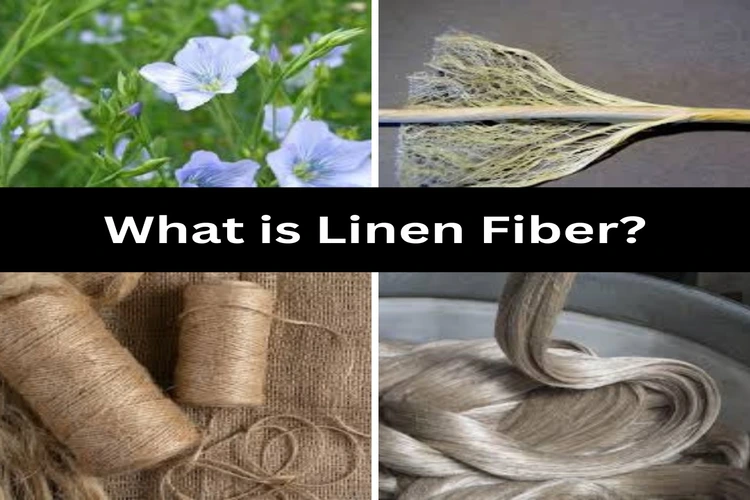Introduction
Linen fiber comes from flax and is one of the oldest textiles globally, known for its strength and elegance. Like all things from the earth, linen’s characteristics change based on the environment and weather. It’s easy to dye and print, but it can get wrinkled because it doesn’t stretch much. High-quality linen often has natural variations that enhance its beauty, much like the diverse landscapes in our native lands.
Where Flax Plants or Linen Fiber Are Grown?
Flax grows well in cooler regions worldwide. Belgian Linen, known for its quality, sources flax from Belgium, northern France, and southern Netherlands, supplying most of World Linen’s flax fiber. Beyond France, the Netherlands, and Belgium, other countries like China, Italy, Ireland, and even the United States produce linen, with the U.S. primarily using flax for its valuable flaxseed oil.
Composition of Linen
- Cellulose 70%
- Gums 10%
- Proteins 10%
- Natural impurities 10%
Physical Properties of Linen
- Elastic-plastic nature: Linen fiber doesn’t bend easily because of its crystal-like structure held together by hydrogen bonds. When you try to bend or stretch it, the polymer chains of linen fiber can break, creating weak spots in the fiber, which results in wrinkles and creases in linen fabrics.
- Tenacity: Flax is sturdy because its polymer structure is like crystals and its longer polymers form more hydrogen bonds than cotton fibers.
- Thermal properties: Linen fiber outshines other commonly used textile fibers in terms of heat resistance and conductivity, and the exact reasons for this phenomenon remain a mystery. When it comes to other thermal properties of flax, the same explanations that apply to cotton are just as fitting.
- Hygroscopic nature: The hygroscopic properties of cotton also apply to linen fiber.
- Strength: It’s a stronger fiber than cotton fiber because of its crystal-like structure, allowing it to form more hydrogen bonds. Linen fiber strength ranges from 4.8 to 6.0 gm/denier, and it’s 20% stronger when wet than when dry.
Chemical properties of Linen
Linen fiber and cotton fiber have similar chemistry, but we don’t use mercerization on linen. Regular linen washing causes a chemical reaction that affects the waxes and gums holding flax fibers together. This makes the ends of the cells pop out from the linen’s surface, a process we call ‘cottonization.’ If it goes too far, it weakens the linen fabric.
The macro-structure of Linen fiber
- Linen fibers are strong and have a subtle shine.
- They vary in length from 10 cm to 100 cm, with an average of about 50 cm.
- Linen fiber cells are approximately 25 mm long and 10 µm to 20 µm thick, resulting in an average thickness of 40 µm to 80 µm.
- The length-to-width ratio of linen fibers is significant; the best linen has a ratio of about 15,000:1, while shorter fibers may have a ratio of 1,500:1 or less.
- Fiber thickness depends on the number of cells in a cross-section, usually 3 to 6 cells.
- Linen fiber can have a color ranging from light blond to grayish blond, influenced by growing conditions and retting quality.
- Flax’s gentle sheen comes from its long, even linen fiber surface coated with a reflective wax film, giving it its understated luster.
Production process of Linen
People often compare linen to cotton, but creating linen fiber is pricier and tougher because working with flax fibers is challenging. Even though machines are used in some parts of linen production, skilled artisans are essential for many steps.
Step 1: Linen fiber is sown in cooler climates, and after around 100 days, it’s time to harvest.
Step 2: The fibers are separated by taking off the leaves and seeds, and then extracting the flax fibers from the dried stems. This all begins with “retting,” where the flax is soaked in water and left to dry.
Step 3: To further free the linen fibers, we “scutch” them, crushing the woody part of the stalk. In the old days, a long wooden blade did the job, but today, modern metal rollers take over.
Step 4: The fibers are then taken out, and other parts of the plant are kept for different uses, like making paper, which adds to sustainability.
Step 5: These natural fibers go through “heckling,” a combing process that separates the short fibers, leaving behind the long flax fibers.
Step 6: Lastly, those long linen fibers are spun into yarn, all set for weaving into textile products.
Advantage of Linen fiber
- Linen fiber impressively strong when wet and dries fast.
- Linen fiber Great for warm weather, and easy to clean.
- Can handle high washing and ironing temps without a problem.
- No static, pilling, or lint issues.
- Its fibers have a unique thick-and-thin texture.
Disadvantage of Linen fiber
- Linen fiber wrinkles quickly.
- It can withstand wear moderately but isn’t very durable.
- It lacks drape and stretch.
- Linen fiber is quite expensive.
You may also like:
- Explore The Different Types Of Textile Fibers
- Structure and Properties of Cotton Fiber
- Kapok Fiber: Properties, Structure and Production Process
- What is Jute Fiber? Properties, Advantages and Disadvantages.
- What is Hemp Fiber? Properties, Advantages and Disadvantages.
- What is Ramie Fiber? Properties, Advantages and Disadvantages.
- What is Sisal Fiber? Properties, Structure, and How It Made?
Share this Article!

